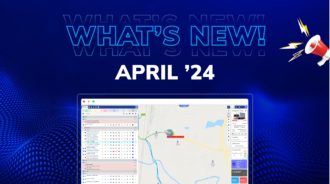In the dynamic world of fleet management, staying ahead of the curve is paramount. One trend that has gained significant traction is the adoption of driver behavior tracking software. This innovative approach not only enhances operational efficiency but also dovetails seamlessly with advanced expense management within fleet management systems. In this comprehensive discussion, we will explore the myriad reasons why driver behavior tracking software is indispensable for fleet managers.
Unpacking the Necessity of Driver Behavior Tracking
Enhancing Safety Through Behavioral Insights
The primary aim of driver behavior tracking is to enhance overall road safety. This technology provides fleet managers with detailed insights into how drivers interact with their vehicles and the road. For example, it can identify patterns like excessive speeding, harsh braking, and abrupt cornering. Understanding these behaviors is crucial because they are often precursors to accidents. By intervening early, fleet managers can provide targeted training and feedback to drivers, thus significantly reducing the risk of road mishaps.
Improving Fuel Efficiency and Reducing Costs
Driver behavior has a direct impact on fuel efficiency. Practices such as speeding, idling, and aggressive driving can lead to increased fuel consumption. With the help of behavior tracking software, these inefficiencies can be identified and addressed. This not only leads to cost savings in terms of fuel expenditure but also helps in reducing the carbon footprint of the fleet, contributing to environmental sustainability.
Prolonging Vehicle Life and Minimizing Maintenance Costs
The way a vehicle is driven can significantly affect its longevity and maintenance needs. Rough driving can lead to more frequent and severe maintenance issues, from increased tire wear to engine strain. By monitoring driver behavior, fleet managers can pinpoint which drivers or vehicles require attention and take proactive steps to address these issues. This preventative approach to maintenance can lead to substantial savings over time.
Enhancing Driver Accountability and Performance
Driver behavior tracking fosters an environment of accountability. When drivers know their behavior is being monitored, they are more likely to adhere to safe driving practices. This not only improves safety but also positively impacts their overall performance. Fleet managers can use the data from the tracking software to recognize and reward good driving behaviors, which can boost morale and encourage a culture of excellence.
Supporting Compliance and Reducing Liability
For fleets, compliance with regulatory standards is critical. Driver behavior tracking helps ensure that drivers adhere to speed limits, rest break rules, and other regulatory requirements. This adherence reduces the risk of fines and legal issues. Additionally, in the event of an accident, having detailed data on driver behavior can be invaluable in defending against unwarranted claims or in understanding the circumstances leading to an incident.
Data-Driven Decision Making
The data collected through driver behavior tracking is a goldmine for fleet managers. It allows for informed decision-making in various aspects of fleet management, from route optimization to driver training programs. This data-driven approach ensures that decisions are not based on assumptions but on actual behavioral patterns and trends.
Seamless Integration with Expense Management
Streamlined Expense Tracking
One of the standout features of advanced fleet management software is robust expense management. Driver behavior tracking software plays a crucial role in this aspect by providing accurate data on vehicle usage and driver behavior. This data is invaluable for allocating expenses accurately, ensuring that financial records are precise and reliable.
Enhanced Budgeting and Forecasting
Moreover, integrating driver behavior data into expense management systems allows for more accurate budgeting and forecasting. With detailed insights into how driving behavior impacts fuel consumption and maintenance costs, fleet managers can make more informed decisions, leading to better financial control and foresight.
Compliance and Reporting Made Easy
Staying Ahead of Regulations
In the realm of fleet management, adherence to regulatory standards is non-negotiable. Driver behavior tracking software ensures compliance with road safety regulations and working hour limits, thereby safeguarding against legal complications and fines.
Effortless Documentation
Additionally, the software simplifies the reporting process. The data collected can be effortlessly compiled into comprehensive reports for compliance purposes and internal record-keeping, thus saving time and reducing the administrative burden.
Fostering a Culture of Responsibility
Encouraging Safer Driving Practices
Continuous monitoring and feedback lead to a significant shift in driver behavior. Drivers become more conscientious and responsible, understanding that their driving habits are being monitored and that they are accountable for their actions on the road.
Tailored Training and Development
The insights gained from monitoring also aid in identifying specific areas where drivers may need additional training or coaching. This allows for targeted training programs that directly address individual needs, resulting in a more competent and professional driving team.
Conclusion
The implementation of driver behavior tracking software in fleet management is not just a passing trend; it’s a strategic move towards safer, more efficient, and cost-effective operations. This technology, when integrated with advanced expense management features, offers a holistic solution that addresses numerous challenges faced by fleet managers. As the landscape of fleet management continues to evolve, embracing such technologies is not just beneficial—it’s essential. Driver behavior tracking represents a commitment to safety, efficiency, and financial prudence, and its benefits extend far beyond the immediate operational improvements. It’s an investment in the future of fleet management, one that will yield dividends in safety, efficiency, and financial health.



